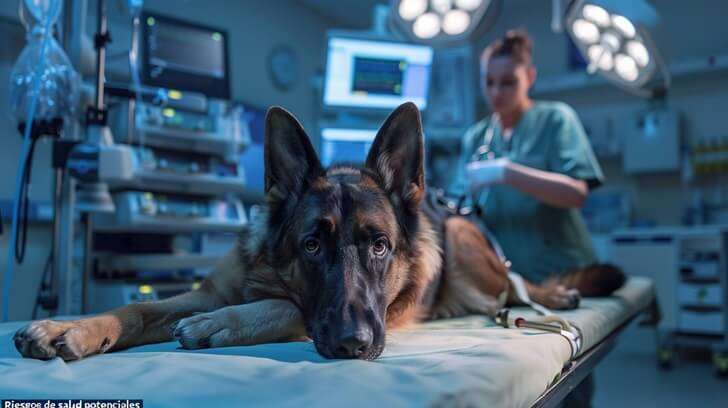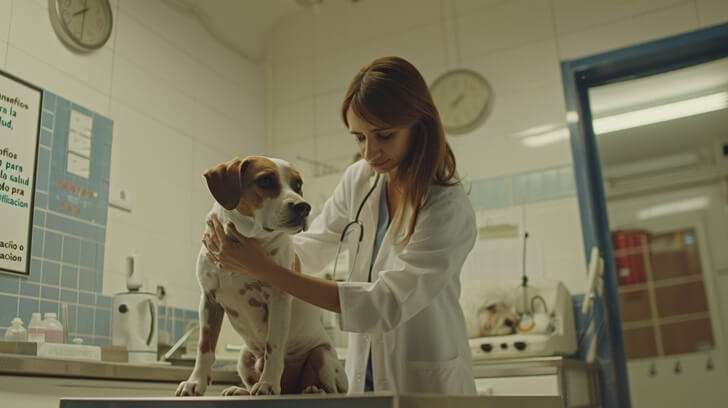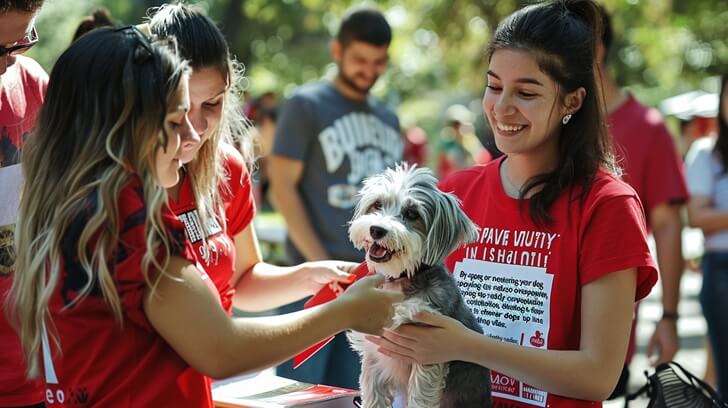
Why Spaying and Neutering is a Critical Decision for Every Dog Owner
As a dog owner, deciding whether to spay and neuter your dog can feel like a big decision. There are many factors to consider: your dog’s health, potential behavioral changes, cost, and even societal impact. While veterinarians often recommend spaying and neutering your dog as part of responsible pet ownership, it’s essential to fully understand the procedures’ pros and cons. This decision is not only about preventing unwanted litters; it’s about your dog’s overall well-being and quality of life.
In this article, we’ll dive deep into everything you need to know about spaying and neutering, covering its benefits, drawbacks, common myths, and practical advice for a smooth post-surgery recovery. Whether you’re a new dog owner or contemplating the best time to schedule the surgery for your puppy, this guide will provide the evidence-based information you need to make the best choice for your dog.
What is Spaying and Neutering? A Quick Overview
Before delving into the pros and cons, it’s essential to understand what these terms mean.
- Spaying (Ovariohysterectomy): This is the surgical removal of a female dog’s ovaries and uterus, rendering her unable to reproduce. It is a routine procedure performed under general anesthesia.
- Neutering (Orchiectomy): This is the surgical removal of a male dog’s testicles. Like spaying, neutering is a common procedure done under anesthesia and ensures the dog can no longer reproduce.
While these surgeries are considered standard veterinary care, they still involve general anesthesia and recovery time, making it vital to be well-informed about their effects.
Key Benefits of Spaying and Neutering Your Dog

1. Population Control and Preventing Unwanted Litters
The most obvious and socially responsible reason to spay or neuter your dog is to prevent the birth of unwanted puppies. Millions of dogs are abandoned or surrendered to shelters each year, with many never finding a forever home. By spaying or neutering your dog, you’re helping to reduce overpopulation, directly contributing to fewer dogs ending up in shelters.
Additionally, it’s essential to understand that accidental breeding can happen quickly—one litter can result in five to ten puppies, all needing homes. If you’re not prepared for the responsibility of raising a litter, spaying or neutering is the most reliable solution.
2. Health Benefits for Female Dogs: Preventing Serious Diseases
Spaying a female dog before her first heat cycle can drastically reduce her risk of certain health problems, including:
- Mammary Tumors: Unspayed female dogs are at a much higher risk of developing mammary tumors, a type of cancer affecting the breast tissue. Spaying before the first heat can reduce this risk by up to 90%.
- Uterine Infections (Pyometra): This life-threatening condition involves a severe infection of the uterus, leading to pain, lethargy, and if untreated, death. Spaying eliminates the risk of pyometra altogether, as the uterus is removed during surgery.
- Ovarian and Uterine Cancer: Spaying eliminates the possibility of these cancers entirely, offering your dog a longer and healthier life.
3. Health Benefits for Male Dogs: Longevity and Cancer Prevention

Neutering your male dog provides significant long-term health benefits as well, including:
- Prevention of Testicular Cancer: Neutered males cannot develop testicular cancer, which is a common malignancy in intact dogs, especially as they age.
- Reduction in Prostate Problems: Older, unneutered males often suffer from prostate enlargement, which can lead to painful infections and urinary problems. Neutering significantly reduces the risk of these issues.
- Decreased Risk of Hormonal Diseases: Neutering reduces the chance of developing hormone-related conditions, such as perianal tumors and hernias, which are more common in intact males.
4. Behavioral Benefits: Reducing Aggression and Roaming
Both spaying and neutering can positively impact a dog’s behavior:
- Reduced Aggression: Intact males, in particular, tend to be more aggressive, especially around other male dogs or when females in heat are nearby. Neutering often reduces aggressive tendencies, leading to a calmer, more even-tempered dog.
- Less Roaming: Neutered males are less likely to roam in search of a mate, which can reduce the risk of your dog getting lost, injured, or hit by a car.
- Decreased Marking and Mounting Behavior: Male dogs are notorious for marking their territory by urinating in multiple locations. Neutering often decreases or eliminates this behavior, making it easier to manage your dog both at home and in public spaces.
5. Cost Savings Over Time
While spaying and neutering require an upfront investment, they can save you money in the long run. Treating diseases like mammary tumors, testicular cancer, or complications from pyometra can be costly. Preventing these conditions through spaying and neutering not only benefits your dog’s health but also helps you avoid expensive medical bills down the road.
Cons of Spaying and Neutering: Potential Drawbacks to Consider

1. Surgical Risks
Though routine, spaying and neutering are still surgical procedures, meaning there is a small risk of complications. These risks include infection, adverse reactions to anesthesia, and in rare cases, internal bleeding. However, most veterinarians take extensive precautions to ensure the safety of your dog during surgery.
It’s important to work with a trusted vet who can assess your dog’s health before the surgery and provide appropriate post-operative care to minimize risks.
2. Potential for Weight Gain
Spayed and neutered dogs may experience a change in metabolism, making them more prone to weight gain. With their reproductive hormones reduced, their activity levels may decrease, and without proper diet and exercise, this can lead to obesity.
To counteract this, it’s vital to adjust your dog’s diet post-surgery and maintain an active lifestyle for your pet to avoid weight-related issues like diabetes, joint problems, and heart disease.
3. Impact on Development and Growth in Large Breeds
For large and giant breed dogs, timing matters when it comes to spaying and neutering. Studies suggest that spaying or neutering too early—before a dog has finished growing—can negatively impact their joint development. Early neutering may be linked to a higher risk of orthopedic conditions such as hip dysplasia or cruciate ligament tears in larger breeds.
For these reasons, many veterinarians recommend waiting until a large breed dog is fully grown before performing the surgery. Always consult your veterinarian about the best timing for your specific dog based on breed, size, and health.
4. Potential Changes in Energy Levels
Some owners report that their dogs become less energetic after spaying or neutering, particularly in males. While this isn’t always the case and depends on the individual dog, it’s important to be aware of this possibility and ensure you’re still providing enough stimulation and exercise to maintain your dog’s physical and mental health.
Myths and Misconceptions About Spaying and Neutering

Despite the benefits, several myths persist about spaying and neutering, leaving many dog owners unsure about the right choice for their pets. Let’s debunk some of the most common misconceptions.
Myth 1: Neutered Dogs Become Lazy and Overweight
While it’s true that some dogs gain weight after surgery, this is not directly caused by the procedure itself. Neutering lowers your dog’s energy requirements slightly, meaning you need to adjust their food intake and ensure they stay active. With proper management, your dog will remain fit and healthy.
Myth 2: Spaying or Neutering Changes a Dog’s Personality
Neutering or spaying may lead to some behavior changes, but these changes are usually positive. For example, neutered males are often less aggressive and less likely to roam. However, spaying or neutering won’t alter your dog’s core personality—your dog will still be the same playful, loving companion you know.
Myth 3: It’s Better for a Female Dog to Have One Litter Before Spaying
There’s no evidence to suggest that allowing a female dog to have one litter benefits her health in any way. In fact, spaying a female dog before her first heat is the best way to reduce her risk of mammary cancer and uterine infections. Delaying spaying can increase health risks without providing any real benefit to your dog.
Myth 4: Neutering Will Cause My Dog to Feel Less «Manly»
This myth stems from human emotions being projected onto pets. Neutering has no impact on your dog’s masculinity or sense of identity. Your dog doesn’t associate his sense of self with his reproductive organs the way humans might. Neutering simply reduces hormone-driven behaviors, making him more manageable and less likely to engage in territorial marking or aggressive behavior.
When is the Best Time to Spay or Neuter Your Dog?

One of the most common questions dog owners ask is, «When should I spay or neuter my dog?» The answer depends on several factors, including your dog’s breed, size, and overall health.
Timing for Small and Medium Breeds
For smaller dogs, veterinarians often recommend spaying or neutering between six to nine months of age. Small dogs typically reach full maturity more quickly than larger breeds, so spaying or neutering at this age is usually safe.
Timing for Large and Giant Breeds
Large breed dogs, however, mature more slowly, and early spaying or neutering can affect their growth plates, potentially leading to joint problems later in life. Studies suggest that spaying or neutering large breeds before one year of age can increase their risk of orthopedic conditions. For this reason, many vets recommend waiting until these dogs are fully grown, which could be as late as 12 to 18 months.
Individual Health and Circumstances
Ultimately, the decision should be made in consultation with your veterinarian. Factors such as your dog’s health, behavior, and lifestyle should also be considered. For example, if you have a male dog that is showing signs of aggression or marking behavior early on, your vet might suggest neutering at a younger age to address these issues.
What to Expect After the Surgery: Post-Operative Care and Recovery

After spaying or neutering, your dog will need a few days to recover. While the procedures are routine, they’re still surgeries, so your dog may experience some discomfort. Here’s what to expect:
Post-Surgery Recovery Tips:
- Limit Physical Activity: Your dog will need to avoid running, jumping, or playing vigorously for at least 10 days after surgery. Overexertion can lead to complications, such as opening the incision site or developing a hernia.
- Use an E-Collar: To prevent your dog from licking or biting the incision site, your vet may recommend using an Elizabethan collar (also known as a «cone»). This helps prevent infections and promotes faster healing.
- Monitor the Incision Site: Check the incision site daily for signs of infection, such as redness, swelling, or discharge. If you notice anything unusual, contact your vet immediately.
- Provide a Quiet, Comfortable Space: Your dog will need plenty of rest after the surgery. Make sure they have a cozy, quiet area to recover, away from any distractions or other pets.
- Pain Management: Your vet will likely prescribe pain medication to keep your dog comfortable. Follow the dosage instructions carefully, and never give your dog human pain medications, which can be toxic to pets.
Conclusion: Should You Spay or Neuter Your Dog?
Spaying and neutering your dog are widely recommended by veterinarians for their numerous health and behavioral benefits. By preventing unwanted litters, reducing the risk of certain cancers, and improving behavior, these procedures can significantly enhance your dog’s quality of life. However, it’s crucial to weigh the pros and cons and consider factors like your dog’s breed, size, and health status before making the decision.
Remember that the timing of the procedure is also important, especially for large breed dogs, where early neutering may have long-term consequences for their health. By working with your veterinarian and taking the time to understand the procedure, you can make the best choice for your dog’s well-being.
If you’re ready to make an informed decision about spaying or neutering your dog, consult your veterinarian today. And if you’re looking for a comprehensive guide to training and caring for your dog, don’t forget to check out the «Dog Trainer Bible,» your ultimate resource for raising a happy, healthy, and well-behaved dog. Buy your copy now and start transforming your dog’s life today!
